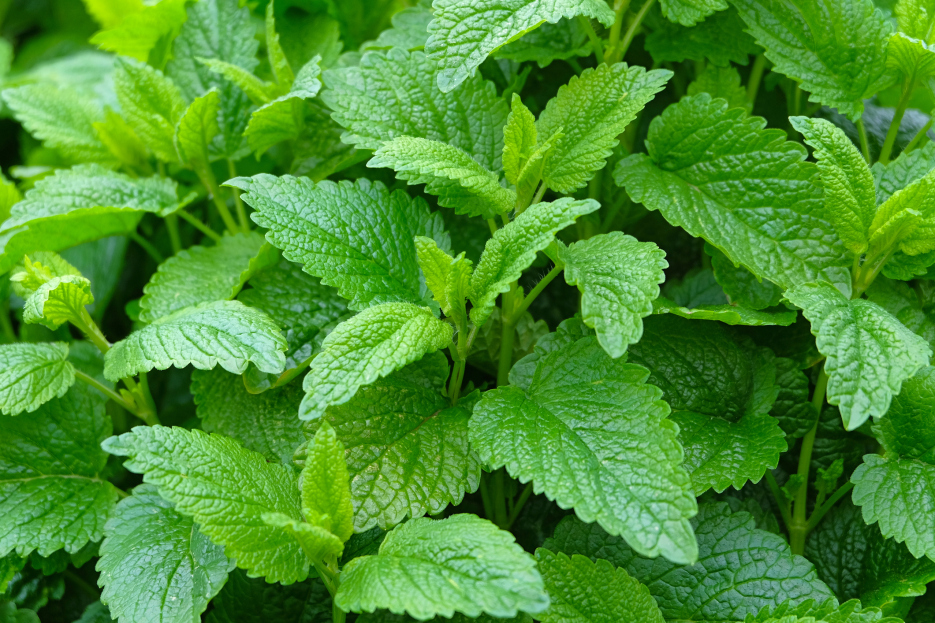
Lemon balm (Melissa officinalis) is a fragrant, easy-to-grow herb that adds a burst of fresh, citrusy aroma to any indoor garden. Known for its bright green leaves and calming properties, lemon balm is not only a lovely addition to your home but also a versatile plant used in teas, culinary dishes, and natural remedies. If you’re interested in growing this herb indoors, here’s a comprehensive guide on how to care for lemon balm houseplants.
Lemon balm thrives in bright, indirect sunlight. To keep your plant healthy and vibrant, place it in a spot where it can receive 4-6 hours of light each day. A windowsill with indirect sunlight, such as one facing east or west, is an ideal location for your lemon balm. If you don’t have a sunny spot, you can also grow lemon balm under grow lights to provide it with the necessary light.
While lemon balm can tolerate some direct sunlight, too much exposure can cause its leaves to burn or turn yellow. It’s important to find a balance between adequate light and protection from the harsh midday sun.
Lemon balm prefers consistently moist soil but does not like to be waterlogged. To achieve the perfect balance, water the plant when the top inch of soil feels dry to the touch. Be sure to water thoroughly, allowing excess water to drain out of the bottom of the pot. Avoid letting the plant sit in standing water, as this can lead to root rot.
During the warmer months (spring and summer), lemon balm may need more frequent watering as it actively grows. In the fall and winter, you can reduce watering since the plant’s growth slows down. Always check the soil moisture regularly to prevent overwatering or underwatering.
Lemon balm prefers well-draining, slightly acidic to neutral soil. A good-quality potting mix that is light and airy will work well for this herb. You can also add perlite or sand to improve drainage if needed. Make sure the pot you choose has drainage holes to allow excess water to escape and prevent the roots from becoming waterlogged.
When repotting your lemon balm, choose a pot that is just slightly larger than the current one to avoid water retention issues. Repotting is typically needed every 1-2 years to refresh the soil and give the roots more room to grow.
Lemon balm thrives in moderate temperatures between 60°F and 70°F (15°C to 21°C). It can tolerate slightly warmer or cooler conditions but should be protected from extreme temperatures. Avoid placing it in drafty areas or near heat sources, as temperature fluctuations can stress the plant.
Lemon balm prefers average humidity levels and can adapt to typical indoor humidity. However, if your home is very dry, especially during the winter months, you can increase humidity by placing a humidity tray under the plant or using a room humidifier. This will help keep the leaves from drying out and maintain a healthy growing environment.
Lemon balm is not a heavy feeder, but it will benefit from occasional fertilization. Use a balanced, water-soluble fertilizer (such as 10-10-10) during the growing season (spring and summer) to encourage healthy growth. Fertilize your lemon balm once every 4-6 weeks, but be careful not to over-fertilize, as this can lead to leggy growth and fewer aromatic leaves.
In the fall and winter, you can reduce or stop fertilizing since the plant’s growth slows down. Too much fertilizer during the dormant period can harm the plant.
Pruning is an important part of lemon balm care, as it encourages bushier growth and helps prevent the plant from becoming too leggy. Regularly trim back any tall or spindly stems to promote fuller, more compact growth. Pruning also helps keep the plant looking tidy and healthy.
Lemon balm is also a great herb for harvesting. The leaves can be used fresh in teas, salads, or as a garnish. To harvest, simply snip off a few leaves at a time, making sure to leave enough foliage for the plant to continue growing. You can also cut back the entire plant if it becomes too large, which will encourage new growth.
Lemon balm is relatively pest-resistant, but it can occasionally attract aphids, spider mites, or whiteflies. If you notice small, discolored spots on the leaves or sticky residue, check for pests. You can remove pests by gently wiping the leaves with a damp cloth or using insecticidal soap or neem oil to treat the plant.
Lemon balm can also be susceptible to fungal diseases like powdery mildew, especially in humid or damp conditions. To prevent this, ensure the plant has good air circulation and avoid overhead watering, which can leave the leaves damp and create a breeding ground for fungus.
During the winter months, lemon balm may slow down its growth and enter a period of dormancy. To help the plant through this time, reduce watering and keep it in a cool, bright location. If your lemon balm becomes leggy or sparse during the winter, you can prune it back to encourage new growth in the spring.
You can also take cuttings of your lemon balm in the fall and root them indoors over the winter to ensure a continuous supply of fresh leaves.
Yes, lemon balm is generally considered pet-safe. It is non-toxic to both cats and dogs, making it a great choice for households with pets. However, as with any plant, it’s always a good idea to monitor pets around your plants to prevent them from chewing on the leaves, which could cause mild digestive upset.